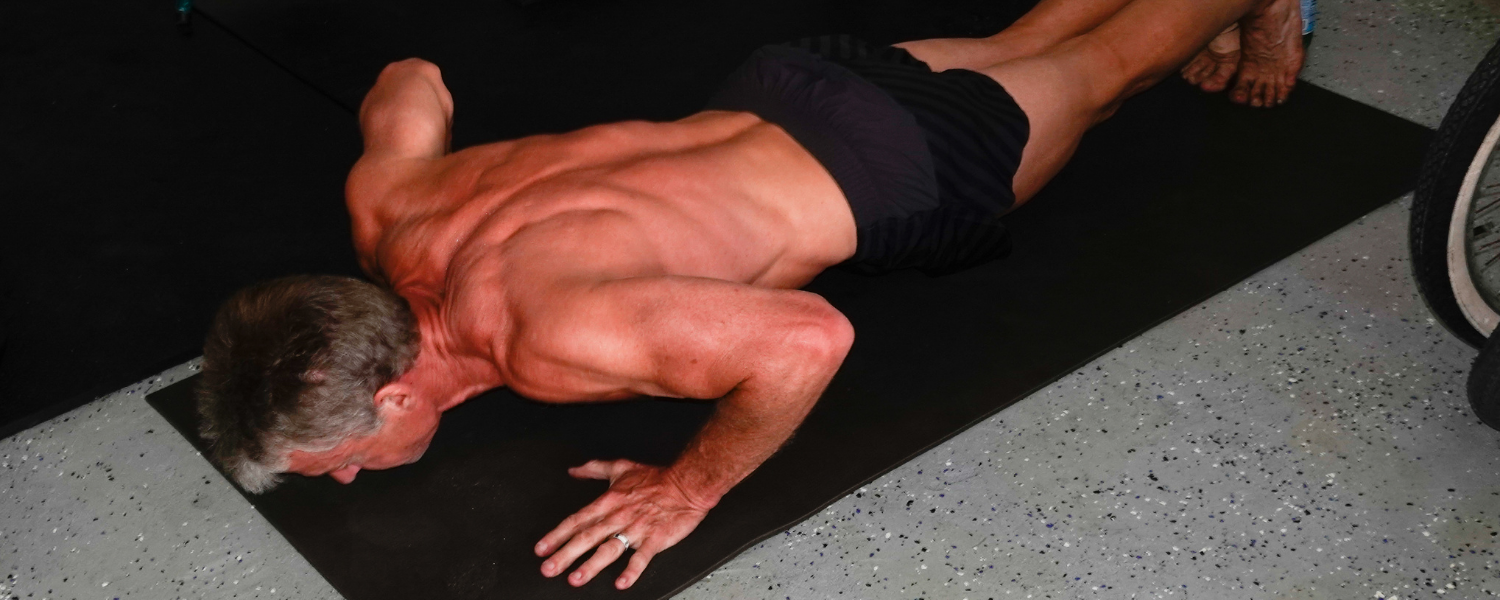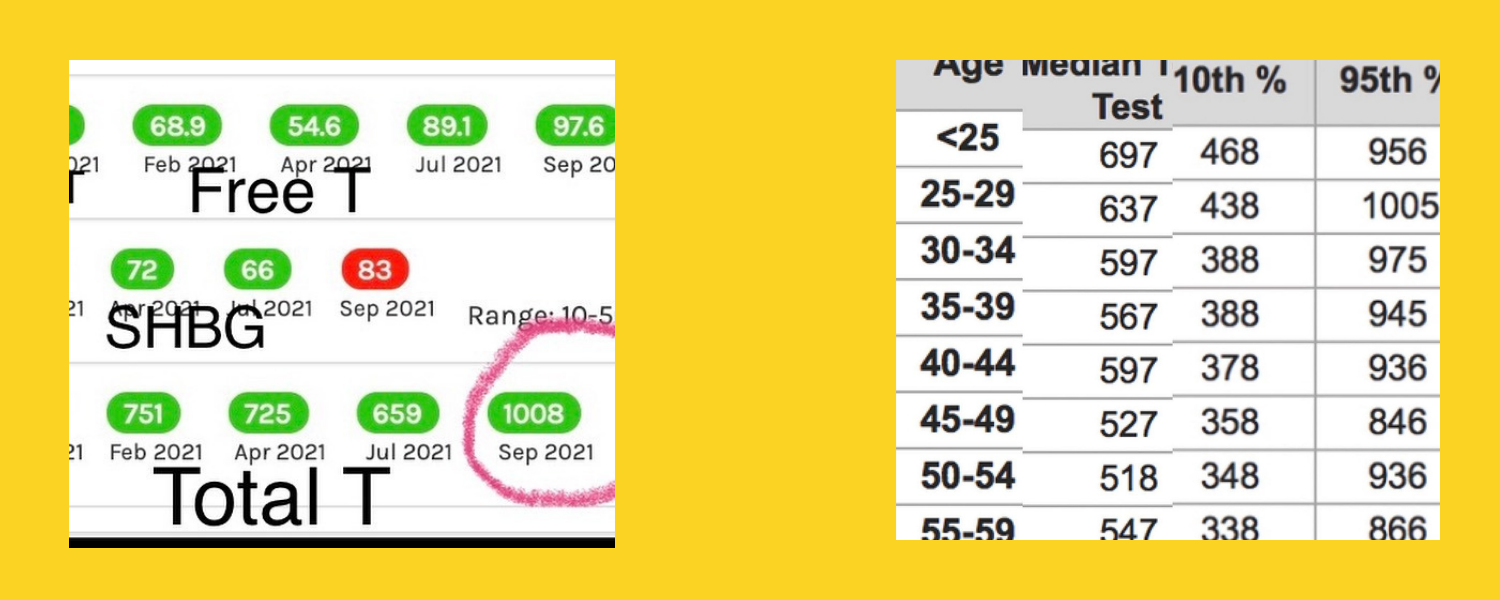It’s no secret by now that the topic of testosterone optimization is something I have much personal interest in after sharing how I was able to double my testosterone naturally by making serious adjustments to my approach to exercise.
Because testosterone is the ultimate male hormone (integral to not only physical power and endurance but also optimum cognitive function and emotional stability), maintaining healthy testosterone production is the ultimate way to preserve your male essence. But hectic modern life simply makes it increasingly difficult to do so, so we must always make a big effort to do everything we can to counteract this. Exercise is one of the best ways to boost testosterone, however, adhering to a pattern of intense effort in your exercise routine is also the easiest way to tank it—from prolonged recovery time to a decline in hormone status, it’s just not worth it.
So what’s a MOFO to do when you want to keep implementing effective anti-aging workouts into your exercise routine, but you don’t want to burn out and cause your testosterone levels to plummet?
The first, unavoidable step, is examining your daily routine and getting honest with yourself about the amount of movement you’re really getting throughout the day. Make it a priority to avoid sitting—Dr. Joan Vernikos, former director of NASA’s Life Sciences Division, who authored the book, Sitting Kills, Moving Heals, has said that people were not designed to sit, and the human body is “a perpetual motion machine.” Another important thing to implement (if you haven’t already) is the inclusion of micro workouts throughout your day. This is important because it’s a great way of counteracting the consequences that come from sitting too much, as microworkouts boost both your metabolism and your cognitive function.
The next, non-negotiable step is to move around every day. Try not to overthink this: it merely means low level movement like JFW (just f*ing ing walk!), dynamic stretches, having a morning flexibility/mobility routine (this has been an absolutely life changing practice for me), more formal practices (think yoga, pilates, tai chi), climbing stairs, and like I’ve mentioned many times before, weaving in micro-workouts throughout the day (practicing ballet moves is also a great option if you want to switch it up, or if you happen to have a background or interest in dance!). General everyday movement is key because it affects all aspects of health, including cognitive and immune function, as well as how your body metabolizes fat. When you don’t feel like moving around, just remember this: movement is the essence of human existence! Sit for just 20 minutes, and you’ll see a decrease in glucose tolerance. It’s that effective, and it happens that quickly.
We don’t have to completely toss cardio out the window, but it does need to be reframed and restructured. Consider mixing it up by taking inspiration from my Jogging 2.0 video to see how I integrate movements that incorporate balance, flexibility, mobility, and explosiveness into my routine. Another fantastic workout that you probably don’t think of often is skipping, so check out my 10 Ways to Skip video. And most importantly, remember that steady state cardio is straight-up unnecessary. You don’t need to get out there and burn calories to stay lean (listen to Dr. Herman Pontzer’s explanation of why here), because it ultimately does not matter that much—cardiovascular training effects can be had from nearly anything, even a comfortable walk around the block. But, if you absolutely insist on doing steady state cardio, please do yourself a favor and be sure to do it according to Dr. Phil Maffetone’s “180 minus age” formula, where you calculate your aerobic maximum heart rate to be 180 minus age in beats per minute.
The Best Exercises To Boost Testosterone:
Regular resistance training. This is one of the ultimate anti-aging practices for maintaining muscle mass as you age. Engaging in regular resistance training means putting your body under resistance load, ideally with sweeping full body functional movements, like squats, deadlifts, pull-ups, pushups. This is key because these movements recruit major muscle groups, and something I’ve talked about on the show before is how being able to squat is strongly associated with your longevity potential. Since the whole idea is to set yourself up for longevity through your lifestyle choices, I also recommend focusing on the lower body compound movements, such as squats and deadlifts. This is because there is greater androgen receptor density in your legs, which ensures that you will receive a better hormone boost when performing heavy-duty legwork. There’s also been compelling research recently about holding a bar in your workouts, so I’ve been doing that recently, as it’s pretty fun and also believed to stimulate androgen receptor site activation, which means you’re going to be producing more testosterone and improving your testosterone status through this kind of exercise.
When it comes to training, I love this concept of working out until you experience “technical failure.” This means when you start to notice some time into your workout that maybe your technique is getting a little bit flawed, that it has started to crack a little bit, and this realization is the moment you put the weight down. It is your body signaling you to move on: either to the next step in your routine, or to just stop altogether. I have found it hugely helpful to frame training this way: that it’s not all about just working toward increasing your reps or adding weight, but that the real goal to aim for is to be technically precise at everything you do.
Variable resistance training. I’ve become a big fan of this method recently after speaking with John Jaquish, the inventor of the X-3 bar, about how there have been some really great scientifically validated claims about how weightlifting is a waste of time (which also happens to be the title of John’s book). His book offers a lot of really compelling information about this concept of variable resistance training, and if you want to learn more about the benefits, click here to listen to our conversation, Smashing Fitness Falsehoods, Getting Super Ripped Without Weights, and Pushing the Extremes of Healthy Living.
All-out maximum effort sprints. Not only do sprints offer wonderful benefits such as fat reduction and increasing bone density, they are the centerpiece of healthy male hormone status. But, they have to be done properly so you don’t experience any of the adverse effects that come with overtraining. Ben Greefield suggests a 6 second sprint if you really want to increase your testosterone, as a 6 second sprint will burn pure ATP in the muscle cell.
If you are new to performing running sprints, then work your way up—aiming towards the goal of doing high-impact running sprinting, and remember of course, that any explosive effort does count as a sprint workout. Kettlebell swings even count as a sprint workout! You can swing for 10 seconds of maximum effort and then take a long recovery period, then swing for 10 more seconds, and take another long rest period, etc. Another fantastic option for either low or no impact sprinting can be had even by rowing or getting on a stationary bike, and putting all your effort in for 10 or 20 seconds, taking a long break, going again, then taking another generous recovery period, and so on. Jumping drills are also a fantastic way of getting in a sprint workout, so check out my YouTube video to see me demonstrate these movements.
When it comes to my own routine, I’m still a work in progress. I have definitely learned the hard way (unfortunately many times!) about overdoing it during exciting sprinting and jumping workouts. But when you absolutely love to get out to the track and work hard, it can be a seriously tough pill to swallow when you realize the next day that your calves are blown out, and before you know it, you find yourself crashing out for an afternoon nap. What I found was, if I ended up doing 21 full high jump approaches, I would realize later on, Oops, maybe 12 might have been a better idea…. Perhaps you too have had the same “weekend warrior” type of experience where you realize after that not only did you go too hard, but now you have to recover from breakdown and muscle exhaustion?
If you need any help remembering or recognizing when it is time to stop your workouts, think of it this way: The 3 T’s: Tightness, Tiredness, or Technique breakdown. Also, never attempt any complex, explosive, or resistance movement when feeling fatigued. If you are someone who experiences excessive or chronic muscle soreness, it’s important to know that this is a sign of overdoing it. It is pro-aging, rather than anti-aging. This is because overtraining is a depleting practice that is considerably exhausting for your body, especially when made into a consistent routine. Throw in the fact that it also leads to a chronic overproduction of stress hormones, and you have a recipe for disaster.
Ultimately, we can all benefit from taking a kinder and gentler approach to fitness and the way we treat our bodies. Because of the experiences I’ve had with this, I have been making a serious effort to back off a bit and leave something in the tank every time. Try it and see for yourself how big of a difference it makes: your explosive efforts combined with other, gentler exercises will still leave you pleasantly fatigued, but also feeling alert, enthusiastic, and satisfied after. The most important takeaway is to keep it simple: bust out some quality workouts, and then end your session before form breakdown, exhaustion, and depletion take hold. It may take some time to get used to the idea that leaving a little in the tank at every session is ideal, but it’s important because you don’t want to get stuck in a pattern of overdoing it, even by a little.
The Importance of The Cool Down.
Post-workout, gradually returning your body to homeostasis is the goal. You don’t want to abruptly stop a workout because that causes your body to experience a buildup of fluid accumulation of toxins in the bloodstream, because your lymphatic system and blood circulation haven’t had enough time to take your body gradually back down to a rested state. Cooling down minimizes the stress impact of your workout, as opposed to making the workout more stressful than it should be. Make sure to bookend your workouts with a really gentle and prolonged elaborate warmup, as well as a gentle, prolonged, elaborate cool-down. This is truly the best and most effective way of engaging in this life-changing fitness objective of doing proper, maximum intensity sprint workouts.
If you want to learn more about how I went from being in the hypo category for testosterone levels to being in the 95% percentile—doubling my free testosterone—all by simply toning down workout stress levels, read my article, How I Doubled My Testosterone Naturally By Minimizing Workout Stress. What I discovered through this process was as soon as I switched to slower workouts, adding sprinting and variation to my daily jog with my dog, all kinds of new growth pathways opened up. It’s a new, enjoyable, sustainable way of approaching workouts: with enthusiasm and an appreciation for simply doing something cool, such as increased competency for new challenges like the Drinking Bird move or explosive efforts like one-legged hopping.
I should also add that the frequency of testosterone testing cannot be underestimated either: levels can vary significantly depending on recent lifestyle changes like emotional stress, overtraining, and lack of sleep, or even the day or time, so get tested frequently and evaluate trends in your numbers. Finally, it’s really important to strive not just for the average number, but way beyond that. This is because testosterone levels are so low these days—we know from research conducted worldwide that globally, the average male testosterone level has declined by 1% annually since the 1980s! This tells us that clearly, the “average” is too low to even consider as a healthy number, so aim high! Aside from that, just prioritize keeping your workout routine varied and interesting, get out there, kick some butt, and have fun!









